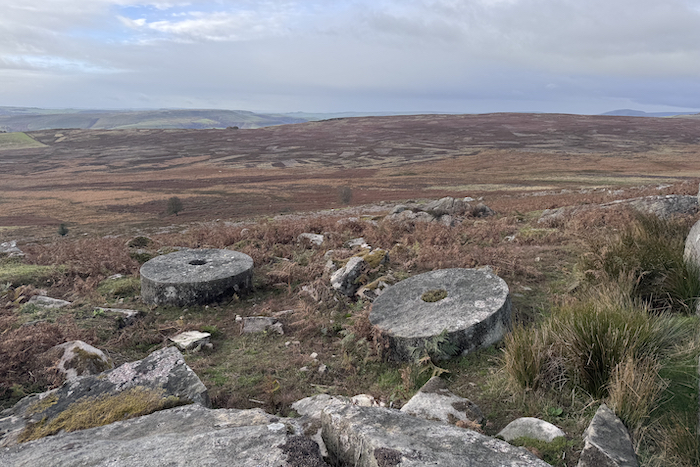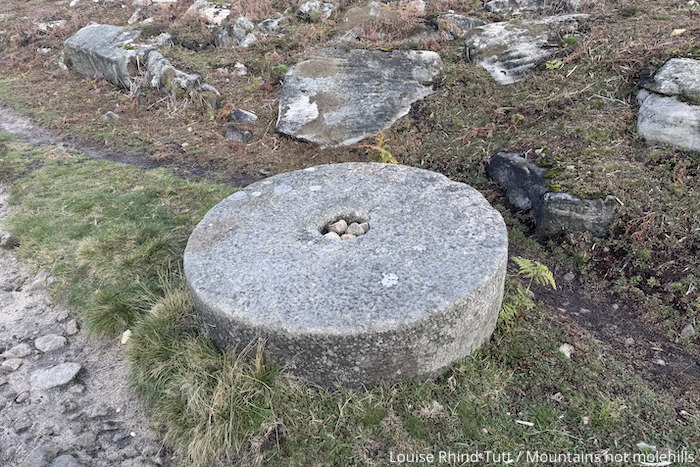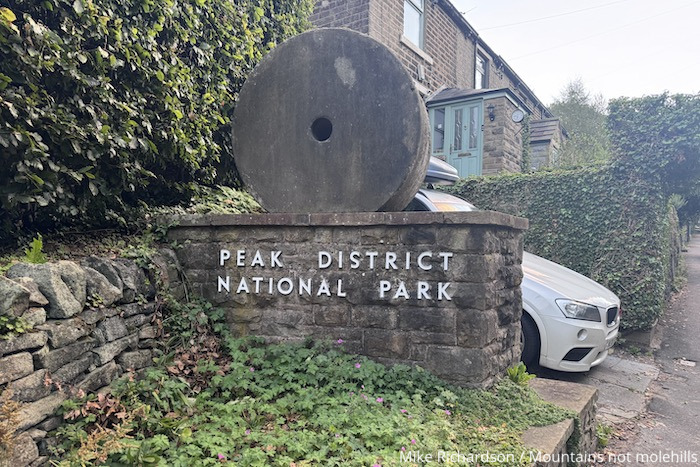What are Peak District Millstones and why are they important to the Peak District?

If you’ve done much hiking around the Peak District National Park you will surely have noticed those large, heavy, round shaped stones that often have a hole in the middle of them. You may have wondered what they are and what purpose they serve? These curious masses of stone are in fact relics of a time-gone-by. They are called Peak District millstones, and they can be traced back to the 13th century according to the Peak District National Park website. Millstones were used to grind grain into flour, and are so common in the Peak District area as it was once at the heart of the industrial age.
Their importance and relationship with the Peak District comes from the successful production of millstones in this area – particularly the Dark Peaks. The gritstone found in the area, particularly Stanage Edge, Millstone Edge and Burbage Edge was the perfect type of stone for millstone production. As a result business was booming in the Peak District.
What is a millstone?

A millstone is a large ‘wheel’ shaped flat stone and is often found with a hole in the centre (called ‘the eye’). Measuring just short of 2m in diameter and weighing on average around 2.5 tonnes, millstones are a huge part of the Peak District’s cultural heritage. In the 18th and 19th centuries they played a vital role in the milling industry, most commonly used for grinding grains into flour. They have been used in this manner for over 2,000 years, with the design changing over the years to meet ever increasing demand.
Millstones were used in pairs — the base stone remained stationary whilst the top stone (known as the runner stone) was free to spin. This created a grinding action between the two stones resulting in grinding the grain into flour. The design of the base stone was commonly domed in shape, whereas the ‘runner stone’ was more concave. To aid with collecting the flour once it had been ground, the stones also had a series of complex grooves cut into them which helped the flour run to the outer edges.
Why are millstones important to the Peak District?

In the industrial age, the Peak District was a major player in the milling industry. Business in the area thrived and by the 19th century millstones were shipped from the Peak District to other places around the world. So why are there so many abandoned millstones across the Peak District? To paraphrase Bob Dylan, the times they were a-changin’. By the 18th century, white bread had become increasingly popular, which required finer, whiter flour. This is something that the millstones of the Peak District with their gritstone were unable to accommodate – leaving tiny fragments of stone powder in the flour. Then in the late 19th century machines were more common in the mills, allowing for high speed grinding which in turn resulted in quicker wear and tear and the gritstone millstones requiring re-cutting more regularly.

One other thing you may have noticed whilst on your travels is the fact that millstones are used as boundary markers within the Peak District National Park and the millstone image is also used on their logo. This signifies the importance and historical connection that millstones have with this beautiful part of the world.

